
In the early stages of television broadcasts, major camera manufacturers — Sony, Grass Valley, Panasonic, Hitachi — did not set out to design and sell a camera chain for concert I-Mag, or even corporate I-Mag, for that matter. Those of us who were resourceful (and lucky) enough to have a client that wanted great-looking I-Mag raided the “used” gear market. We cobbled together systems that delivered the broadcast-level imagery that our clients were expecting. I suspect many stories could be told about the early days when some of us (not me, of course) tried to deliver this service using “non-broadcast” camera chains. For those of you who are not fully in-tune with what I mean by “broadcast camera chain,” let me see if I can explain it without a damn graphic.
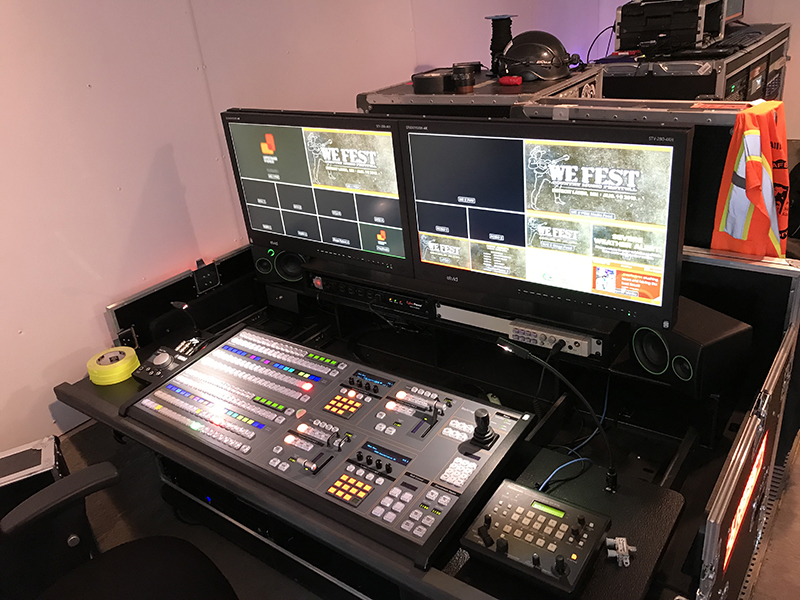
The Camera Chain Setup
So, you’ve got a camera. It’s big, it’s black, it’s heavy, it says “Sony” or “Panasonic” on it or something, it has a lens, and there’s a boatload of controls on it. While it sounds like a broadcast camera chain, and it may look like a broadcast camera chain, this does not in itself make it a “camera chain.” This could simply be a professional-grade camcorder (by “camcorder,” I mean a camera that allows you to record on some sort of removable media format). Settings for the camera, such as exposure and iris or filters, are all controlled by the camera operator themselves, right there on the camera. They produce beautiful images, and, in most cases, they utilize the same glass (lenses) that the broadcast camera chains use. By golly, they’ve even got a live video output via a BNC jack!
This is where it all went south (not for me, of course). Some folks out there decided that if you can capture a great image and send it down a BNC cable that goes directly into a switcher, then voila! You’ve got great-looking I-Mag. I-Mag was born! That is, of course, until the lights went out…
Back to the camera chain. The camera chain is just that: a series of components “chaining” the entire camera system together. A camcorder is a self-contained video unit with a BNC output that has the ability to change the essential camera settings locally, on the camera. A camera chain, on the other hand, is designed to relieve the camera operator of the need to manage their own settings and control, instead pushing that task to a “remote” operator — someone at the other end of the cable, monitoring what is being sent down that cable. So, the basic components of the camera chain are the camera itself; its lens and lens controls; the cable itself (triax or fiber — we’ll save wireless for our advanced class, and, yes, wireless is much more expensive); a CCU (camera control unit); and, normally, RCP (remote control panel). I may be wrong about its origin, but the idea of the “chain” likely began in the studio — however, it really grew up and became its own thing because of the production truck.
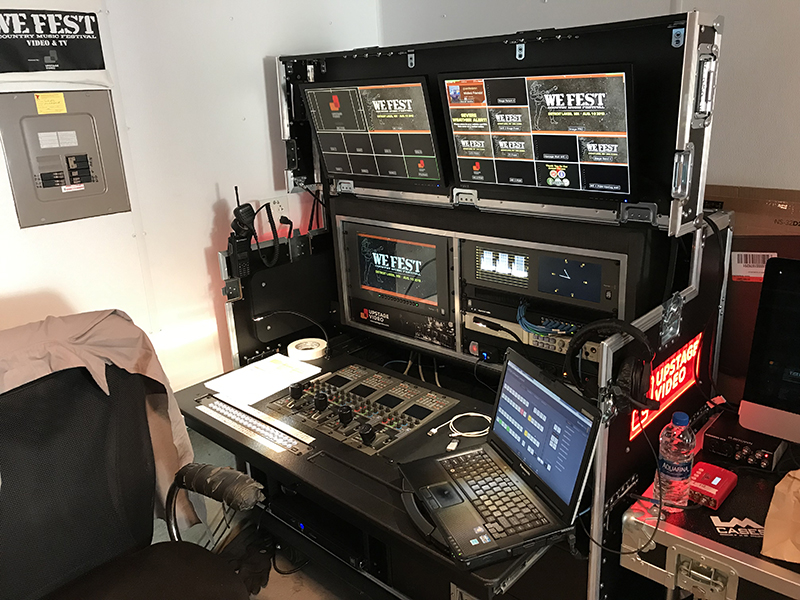
So, what normally travels down this cable? (For you folks who already know this stuff, I apologize for the elementary explanations, but think of how helpful this article would be if you had stumbled upon it eight seconds after you decided you wanted to get into concert video.) You’ve got power, camera control, multiple channels of audio, intercom, two-way video, whatever the camera is sending down the line to the switcher, and return (whatever the switcher is sending back to the camera). What’s the end result of all of this technology? The end result is a camera operator who can spend her time focusing on getting a great shot (stable, focused, and framed so that someone actually wants to look at it) — difficult enough without having to worry about your iris, color temperature, filter, etc.
With a camera chain, the image in the camera is being controlled remotely by the “shader.” This person monitors all cameras and rides the joysticks to change the IRIS settings to allow more or less (or, preferably, just enough) light into the camera to create an accurate image. That’s no easy job when you’ve got an epileptic-seizure-inducing light show happening onstage. The CCU’s also allow for multiple outputs, so one feed can go to a switcher, another to a record deck, and maybe another to a live stream or something else. When you add in the Return feature and the Com, it brings the director and the camera operator into the same zone and allows the camera op to quickly and simply take a look at the Program feed in her viewfinder, simply by pressing a button beneath her thumb.
Okay, so now they can hear the director, talk to the director, and see what the director is actually putting out to the Program feed. I know you can throw some bad camera ops and a stoned director at a show with proper broadcast camera chains — and it can turn out horribly — but imagine how bad it can be when they can’t communicate with one another. The camera operator has to ride their own controls, and the op can’t see the Program feed.
Oh, it’s brutal, my friends. I’ve seen it. I’ve seen it when the budget doesn’t allow (or ignorance prevails), and it’s horrible. It makes me want to sneak backstage and unplug the rig to save the audience from further distracting imagery.
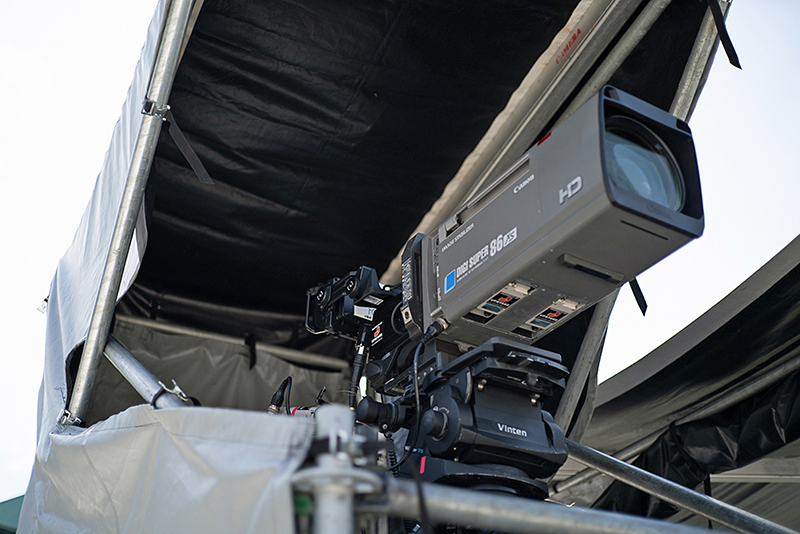
The Expense
Now that that’s covered: why is it so expensive? Well, I don’t think our market (concert touring and corporate theater) is the key focus of innovation in the professional camera. The focus is live sports — and there is stiff competition in that market for more cameras, more looks, more resolution. The stakes are higher when broadcasting a feed to 50,000,000 worldwide versus 10,000 in an arena or 50,000 in a stadium.
There is one other thing I would like to clear up. There are unique scenarios and business models (aren’t there always?) that will conflict with what I’m saying here. By the time you recoup your investment, the gear is either obsolete or it’s past its useable life cycle (it broke down). I know, I know, you see new gear out there all the time, and to you PM’s that “demand” new gear, I hope you are willing to pay your bills with new, crispy, overpriced dollars. I understand a director or an artist wanting to push their craft and push the art with the best tools they can get their hands on, but please remember what you’re doing. The audience’s senses are under attack from every direction, no matter how extreme or conservative the show, and video is just one element in their experience. As the owner of a video company, I am challenged every day to figure out a way to make a small profit by renting these systems. It would go a long way (for all of us in the food chain) if you would actually consider that from time to time. (You like that little rant? You like that? It was quick. It was succinct. It was efficient. And now, it is over. Thank you for your attention.)
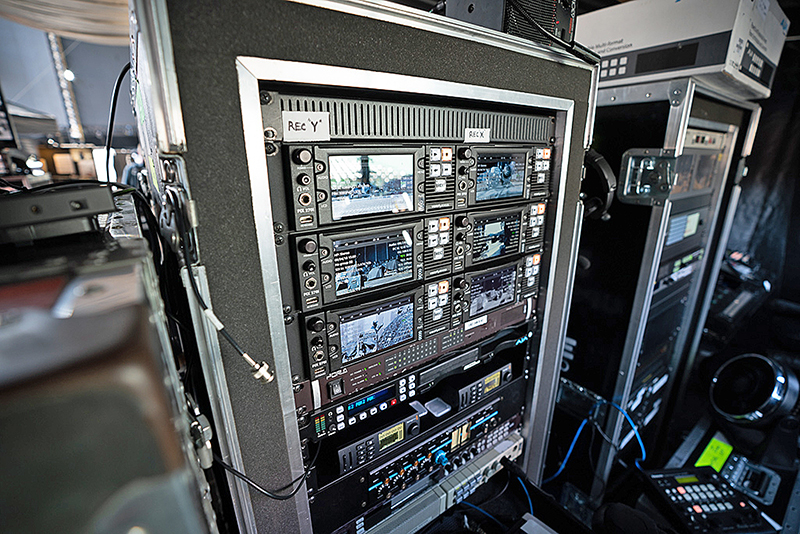
So, that’s what I know. I’m sure you guys know more than me, but I know how to type and send emails to Nook, and apparently you don’t, or you would have written this piece. Knowing that my exposure to the truth is limited, I thought I should check in with Rob Willox, the director of marketing from Sony Electronics, to get his perspective on why we might be perceiving their solutions as “expensive.”
“A lot of our readers are not video professionals,” I noted. “They are production managers, lighting designers, cousins of lead singers who are now the ‘video guy,’ and a common question among this demographic is ‘why are these cameras so expensive?’ Now, please keep in mind that I realize ‘expensive’ is a relative term. They may not be considered ‘expensive’ at all by someone who is running a production truck five days a week shooting sports, but when you look at some of the budgets that are associated with video in the touring or corporate market, I think it’s fair to categorize the investment in a video rig as ‘significant.’ How accurate is it to say that Sony is emphasizing the broadcast clients in comparison to corporate and touring I-Mag users?
Rob Willox responded, “The image quality, adjustment accuracy, uniformity between, you know, if you need six or seven cameras in your setup — if they all look different, your I-Mag will look a little funny. We’re very cognizant of the image quality and pricing of our competitors because a lot of organizations want to do shootouts and things like that before they purchase. I think HD cameras right now are a commodity. Everybody makes a really good one. So, it becomes, ‘what can you do for the lower price?’ And hence, that’s why we introduced the FB80 series. So, the overall price of cameras has dropped quite significantly in the past five years. The cameras up from the 3100’s, in every way that you can measure, is [sic] better than its previous generation, and it’s less money — significantly less money than its previous generation — so you have to keep that in mind.”
Rob was quick to point out that they have succeeded in pushing down the cost of the camera significantly in the past five years — but hold the presses. When you hear a camera costs $20K as opposed to $40K just five years ago, there’s more to that story, he notes. The glass is still a significant expense. An average 22x lens for a handheld camera is $26K. Have you seen the cost of the typical long lens that you all request? How about $180K? Yes, you read that correctly. Add another $6K for the viewfinder onto that $20K “value engineered” camera. And if you ask a typical production manager what they think a quality tripod costs for one of the cameras at FOH, the answer is always “one thooooouuuuusssssaaaaannnnd dollars” (in a Dr. Evil voice). But the truth is, it’s not uncommon to spend over $20K for the tripod. And if you’ve got a couple hundred grand wrapped up in your camera chain, wouldn’t you assume another $5K for cases is a good idea? So, when you ask, “Why are they so expensive?” my assumption is that you weren’t intimately aware of the acquisition cost. Now you are.
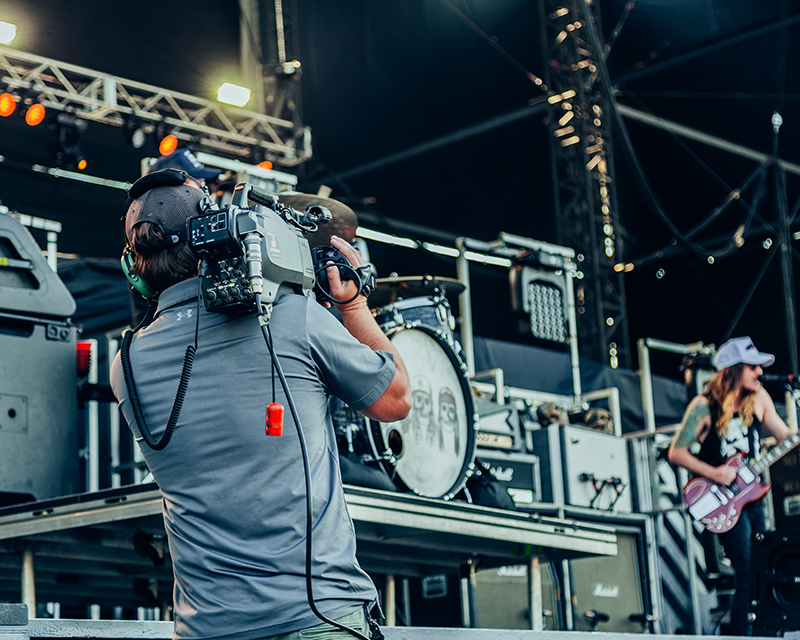
The LED Factor
Here’s another way of looking at it. Just six or seven years ago, the cameras we were running were considered the best-in-class, but something very significant changed in that time period: the LED fixtures, the LED screens, all created a challenge for the camera. The camera’s line scanning couldn’t sync with the refresh rate of the LED, nor could it process the light that the new LED fixtures were throwing onto the artist or scene. You’ve all seen the effect of an oversaturated shot of an artist with purple light on their face or red light on their skin. Even at the highest resolutions, the camera output was blotchy and distorted. The manufacturers recognized this new phenomenon, and we all had to upgrade to the latest technology. One department’s evolution (lights all become LED) forced another to upgrade prematurely.
Why are they so expensive? If you’re a CliffsNotes sorta person, you’ve skimmed down here for the quick answer. The reason seems to be that the systems are not developed specifically for our market, so the economics of our market are not a huge consideration when the manufacturers perform their cost analysis on the design of the product and for whom it’s designed. I think most of the major brands are doing a great job at addressing the problem (features vs. expense). We just have to do a better job of explaining the investment costs to our end-clients: the production managers, the producers, and the lead singer’s little cousin Joey.
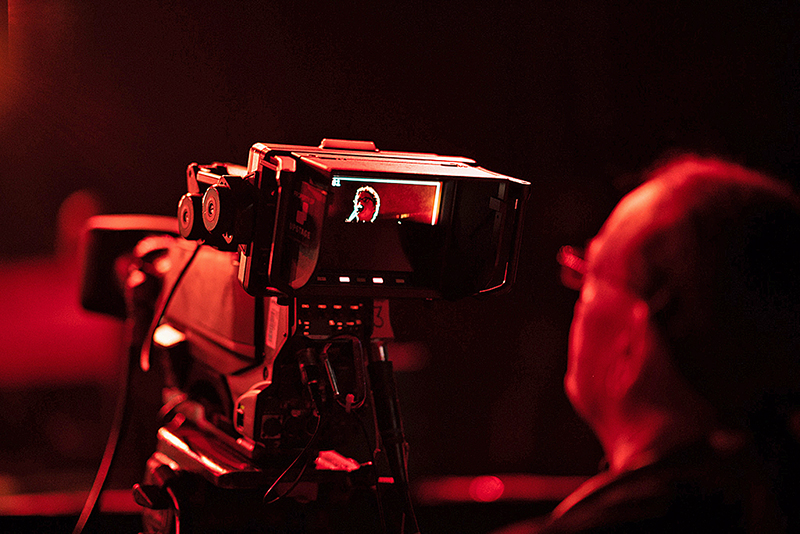
Doug Murray is the head honcho at Upstage Video (www.upstagevideo.com).


